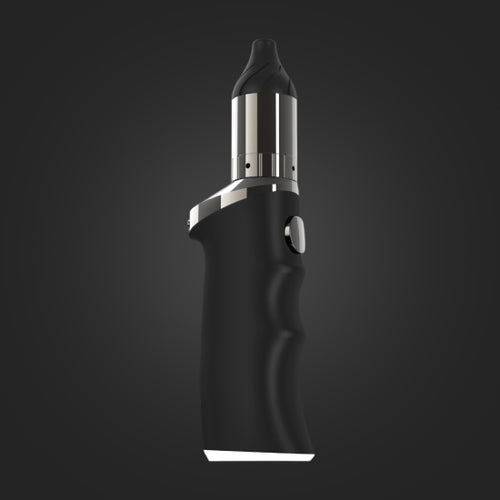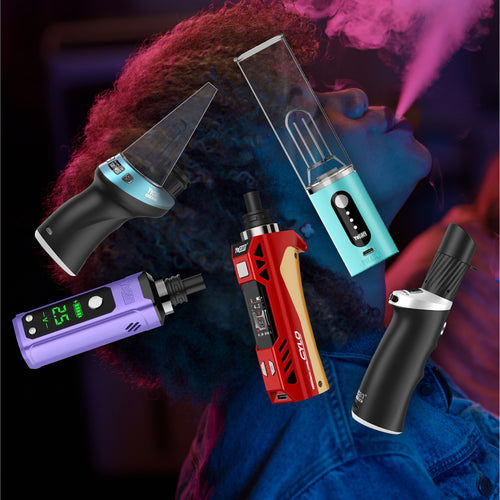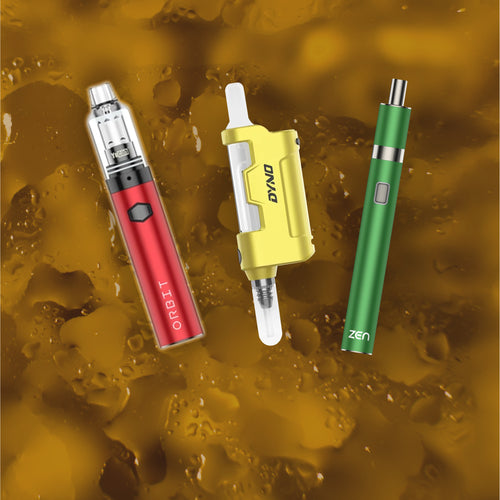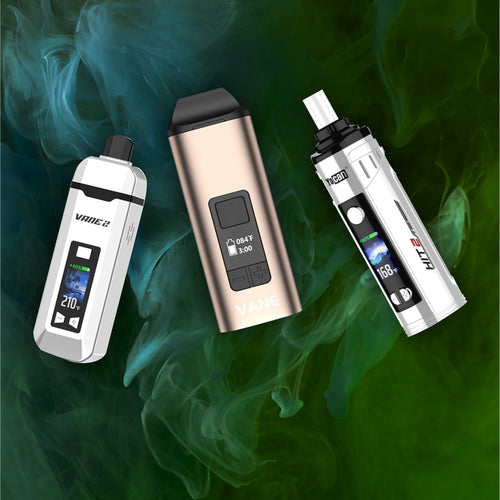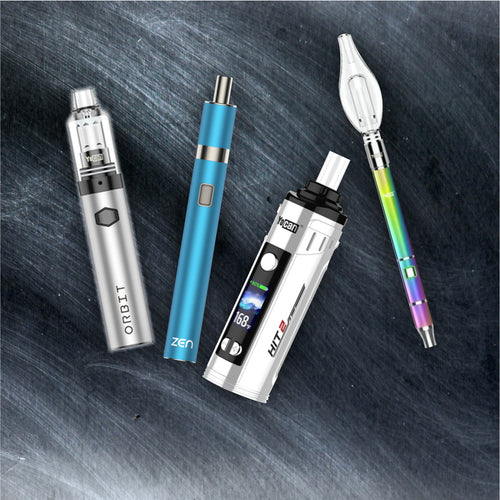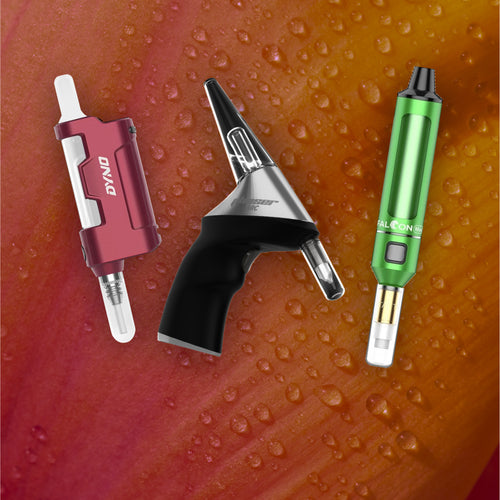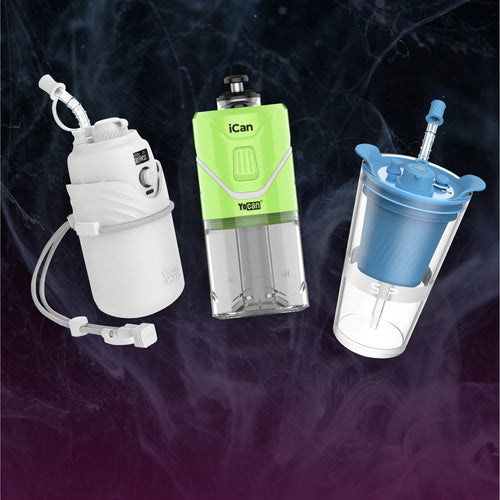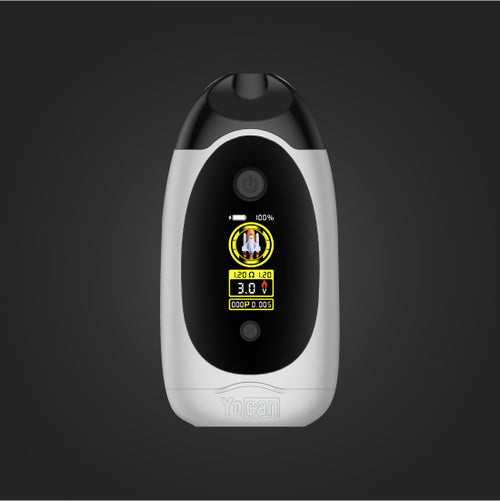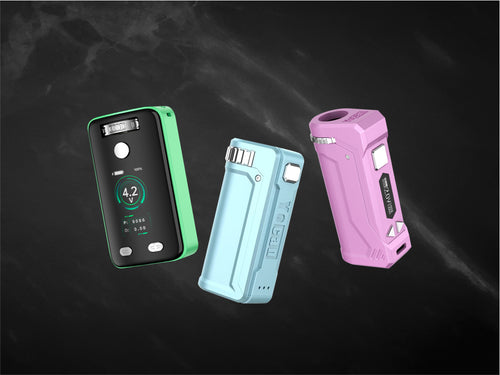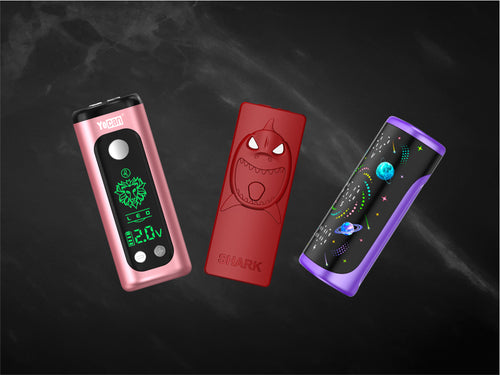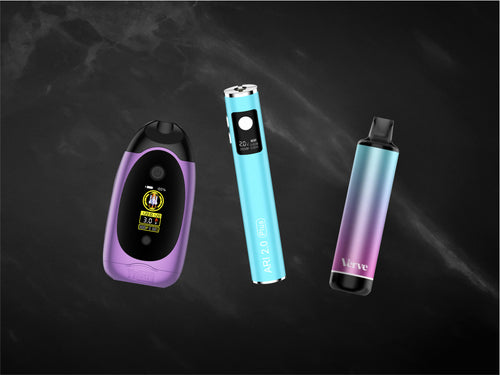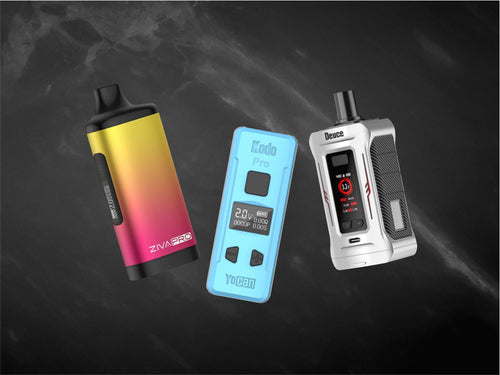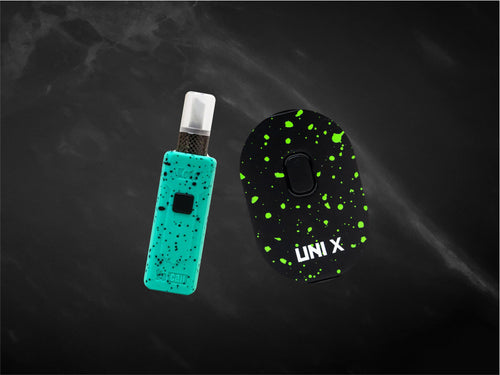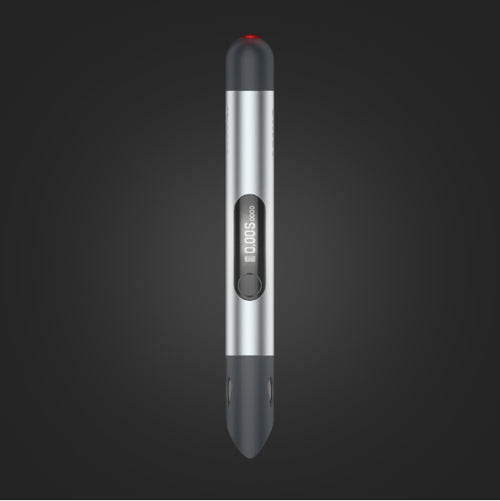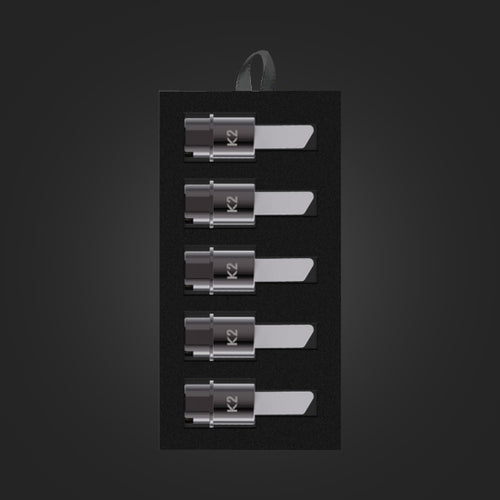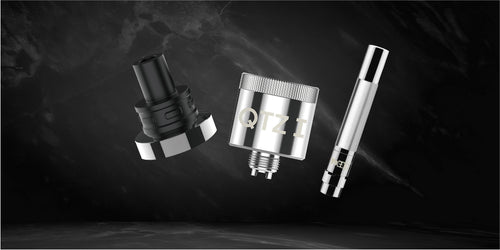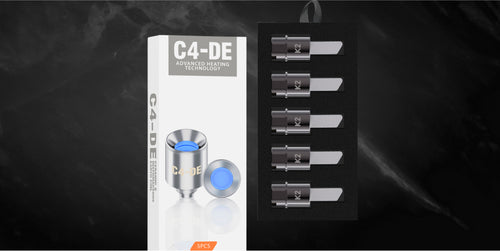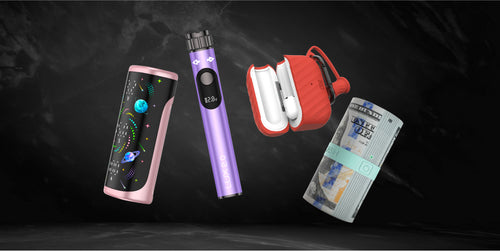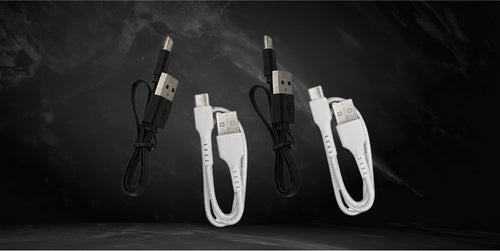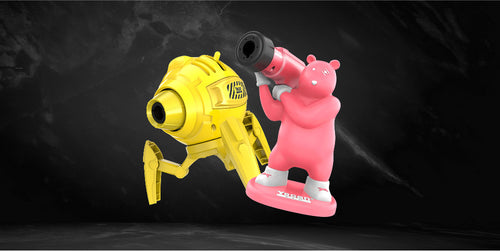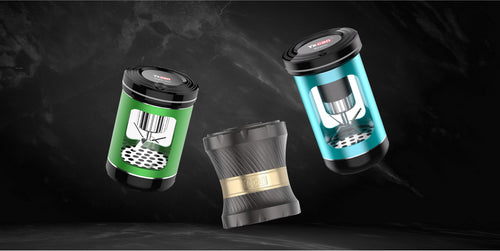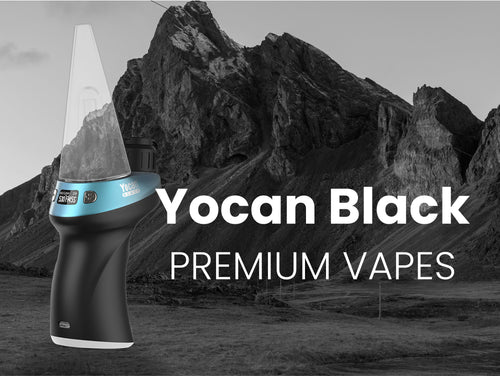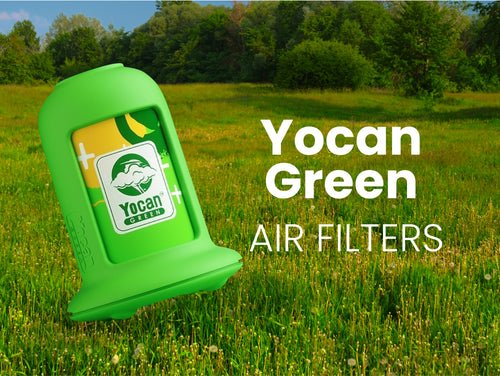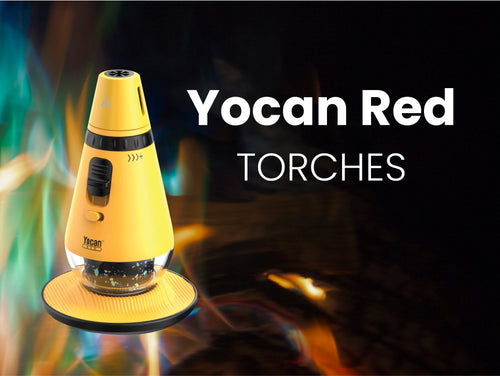To use a wax pen, make sure to charge the battery first for a certain amount of time set and indicated by the manufacturer, usually around 2 to 3 hours. Next, remove the wax pen from the charger and remove the mouthpiece to access the wax chamber. Then, load your wax concentrates into the wax chamber or the wax atomizer. Lastly, screw the mouthpiece back on top and press the power button five times to power the wax pen on. You might need to press and hold the power button to activate the atomizer and vaporizer your wax concentrates.
Your wax pen comes in all shapes, sizes, and technology. These factors play a huge role in how much a wax pen or a dab pen would cost. Atop-shelf wax penthat uses the latest technology and is made out of some of the best raw materials will usually sport a price tag of $200.00 and above while a decent wax pen that offers the basic functionalities will usually cost anywhere around $100.00 and below. While price tags can be indicative of a device’s quality, there are some products that boast the same quality as thetop-tier dab penswithout the exorbitant price tag.
Yes, but make sure to apply the wax concentrates gently onto the coil and be extra careful not to knock the coils out of place with your loading tool. When using more viscous and gooey wax concentrates, the material can be stubborn and won’t easily come off the loading tool. If this is the case, you can gently twist the loading tool while hovering it above the coil. Nevertheless, make sure not to touch the coils as it can damage the atomizer. If your wax concentrates are highly viscous and can be tough to deal with, you can cut them or break them into smaller pieces to make loading the wax pen easier.
A wax pen that has a shallower and smaller atomizer will offer easier and more convenient loading as you can easily see and access the actual coils and atomizers with deeper and narrower atomizers can be tricky to load wax concentrates into.
A wax pen is made up of three components; the battery, the atomizer, and the mouthpiece, and all are involved in producing the vapor without the unnecessary learning curve.
A wax pen or a vape pen is a simple device. A wax pen works by giving power to the heating element from its battery (oftentimes rechargeable). This process then heats up your materials and extracts its active ingredients into the vapor that can be inhaled from the mouthpiece.
The conventional wax pen has been around for a while now. That’s why it’s not surprising to see various types and different class and categories of heating elements used in conjunction with a wax pen. Let’s look at a few.
1. Coil and Rod Combo.
Probably one of the earliest designs, the coil and rod combo uses a rod, usually made from quartz minerals, wrapped around with a metallic coil. It has a few variations from single quartz rod atomizers, dual quartz rod atomizers, triple quartz rod atomizers, and quad quartz rod atomizers. The intensity of how it heats your wax concentrates depends on the number of coils and rods present in the actual atomizer.
2. Glass Globe Atomizer.
Glass globe atomizers offer a glass attachment that serves as a means of preserving the overall quality of the vapor. Glass is a known inert material and will not have any negative effect on the vapor like cheap plastic and metal that makes the vapor smell and taste bad. Today, glass globe atomizers have added features like recyclers and bubblers and offer the benefits of water filtration and moisture conditioning.
3. Magnetic Atomizers.
These types of atomizers use the technological leverage of magnets as atomizers with older technologies use threaded connections or are held at the base by silicone O-rings which can make the process of removal and replacement quite taxing. Magnetic atomizers are geared towards convenience especially that because a wax pen is designed and engineered for on-the-go use.
4. Ceramic Atomizers.
Ceramic is a fairly popular material in the vaping industry because of its ability to create the ideal environment for heating your wax concentrates. Ceramic has this low and slow heating ability and therefore allows the wax concentrates to burn slowly but steadily. This prevents the wax concentrates from burning which preserves the flavonoids and the terpenes that are native to your extracts creating a smooth and flavorful experience.
5. Pod Atomizers.
A fairly new technology, pod vaporizers are geared towards convenience and are designed as self-containing atomizers that are small, compact, and at best, leak-proof. First designed as an e-liquid material atomizer, several manufacturers took it to the next level and made pod atomizers that are compatible with wax concentrates.
Based on the latest federal tobacco law passed by the congress in 2019, the legal age to buy tobacco andvaporizersin the United States is 21. That said, you need to be 21 years old to buy any kind of vaporizer product in all American states.
There are several ways that a wax pen can be cleaned and maintained. Let's look at the common ways you can maintain your wax vape.
1. Cotton Swab.
One of the easiest ways to clean your wax pen is by using a cotton swab. Take a cotton swab and lightly dip it in isopropyl alcohol. With the slightly damp cotton swab, wipe the atomizer clean rubbing down residual wax concentrates. Avoid knocking the coils out of place as it can damage the atomizer. Start by wiping the sides of the coil chamber until you get close to the coil. It’s also best to clean the mouthpiece as it’s one of the parts of the wax pen that gets the dirtiest. Let the isopropyl dissolve the hardened wax and give it another wipe afterwards. Make sure not to let the isopropyl alcohol drip into the battery as it can cause irreversible water damage. Let the isopropyl alcohol dry before use. Follow up with wiping the body of the wax pen clean either with a damp or with a dry cotton swab.
2. Alcohol Bath.
Another means of cleaning your wax pen, or rather wax atomizer, is by giving it an alcohol bath. This works well for stubborn waxy residue that your cotton swab can’t handle. For obvious reasons, you’re going to need a fair-sized bowl that can accommodate the wax atomizer. Fill it with isopropyl alcohol and give the atomizer a bath, just make sure to unseat it from the battery to avoid water damage. Let it sit there for a few hours stirring the bowl from time to time to help dissolve and dislodge the hardened residue. Using a cotton swab, wipe the atomizer dry and let it rest for a couple of minutes. This will eliminate the aftertaste of alcohol in your next session.
If you’re using a mouthpiece that can handle its fair share of alcohol, soak it in isopropyl alcohol for a few minutes for a thorough clean.
3. The Burn-Off.
Here’s a quick and easy way of cleaning the atomizer coils on your wax pen. Turn your vaporizer on and let the heating element burn for several seconds. This will melt and evaporate the hardened residue. Don’t inhale the product of a burn off and wipe the atomizer clean afterwards.
4. Scrape the Residue with a Dab Tool.
You can always scrape off residual product that any of the aforementioned steps can’t handle. Use your dab tool to lightly scrape off hardened wax concentrates on the side of the atomizer and even on the battery itself. As always, avoid scraping off the insides of your wax atomizer as you might damage the coils. Practice extreme caution when scraping off residual product. Some dab tools also have a pointed end that can be used to poke clogged holes on airflow vents. Just make sure to poke lightly and avoid scraping the paint of your wax pen.
On an average, wax coils tend to last anywhere from 4 to 12 weeks before they need to be replaced. Of course, this will be affected with how often you vape, how much material you put in, and how well your take care of your atomizer.
Finding the best wax pen is a subjective topic, what’s best for others might not be the best for you. Nevertheless, here are a few things you can look out for that can help you decide on what wax pen to invest in.
1. Raw Material.
When looking for a wax pen, it’s best to check the raw materials used to make the device. Some of the most common ones used materials when it comes to vaporizer atomizers are quartz and ceramic. Each material boasts its own set of advantages so make sure you choose depending on your preference.
2. Size and Dimension.
How and when do you plan to use your vaporizer? Are you going to dan when you’re at home? Or are you going to consume your wax concentrates when you’re out and about? If you’re going to use your vaporizer while you’re on your feet, it’s best to get one that’s small and compact so it won’t get in the way. Yes, you may be sacrificing power for size but it’s a fair trade off. If you’re one who likes to use your vaporizer while you’re at home, you can get one that’s on the large and heavy side and enjoy the added power for more substantial sessions.
3. Customization.
Another thing to consider is the ability of your wax pen to customize your sessions. This usually comes in the form of temperature control. Materials like wax concentrates usually react to the slightest change in temperature, so a variable voltage wax pen can be helpful. Unlike dry herb vaporizers, wax vapes usually have pre-set temperature profiles as opposed to precision temperature control.
4. Battery.
Because a wax pen is a portable device, it’s best to consider battery life. Smaller batteries will have a capacity of around 650 to 900mAh at best while larger devices will sport battery capacities for 1100 to 3000mAh. This means long sessions and substantial vapor production in between charges.
With these in mind, you should be able to find the best wax pen that suits your needs.
A wax pen is a device that is designed and engineered to vaporize wax concentrates and its various forms. They are similar in design to oil vaporizers and e-liquid vaporizers but they vaporize the waxy derivative of cannabis instead.
In a nutshell, wax coils draw power from the battery of your wax pen to ramp up heat andvaporize your wax concentrates. A wax coil is often composed of a wired heating element that’s oftentimes coupled with a rod that can either be made out of quartz or ceramic. The average wax coil has the heating element wrapped around the rod while other designs have the heating element enveloped by either a ceramic or a quartz cup.
The active ingredients in the wax concentrates are the same active ingredients found from its botanical derivative. This means that the same ingredients that make the pupil dilate is also present in these wax concentrates and will therefore be an effect of consuming its vapors.
Both vaping and smoking should be considered unhealthy. In fact, anything foreign, be it smoke or vapor, inhaled by your lungs is not healthy to begin with. Nevertheless, studies have shown that compared to smoking and using dab rigs,vapingcan be a healthier option. When smoking, you inhale smoke which is a product of combustion that carries a slew of harmful chemicals. On the other hand, vapor will contain far fewer hazardous elements making it a safer choice.
Wax concentrates are a sensitive variety of cannabis derivative. On that note, it’s best to understand that too low of a temperature will release only the flavonoids and the terpenes of your wax concentrates and too high of a temperature will cause the extracts to burn. That said, the ideal voltage level for vaping wax concentrates should be around 3.8 volts which will usually be the medium setting for most dab pens andwax concentrate vaporizershaving 3.4 volts as the lowest and 4.2 as the highest voltage level. In terms of temperature, it’s best to keep your extracts heated at around 315 to 450° F.
The type of coil used on awax penusually falls under the preference of a consumer, for those who want fast results and potent hits, quartz coils are usually an ideal option since wax concentrates can react quickly to heat and reach high temperature profiles faster allowing the extraction of potent active ingredients faster. On the other hand, connoisseurs who want to enjoy the natural flavors and the terpenes of their wax concentrates are better off using ceramic coils. Ceramic, unlike quartz, offers a slower means of heating your select wax concentrates. This means that ceramic coils give your wax concentrates time to release the flavonoids and prevents the material from burning. Both coil options offer clean vapor production making them ideal for both recreational consumers and medicating patients.
